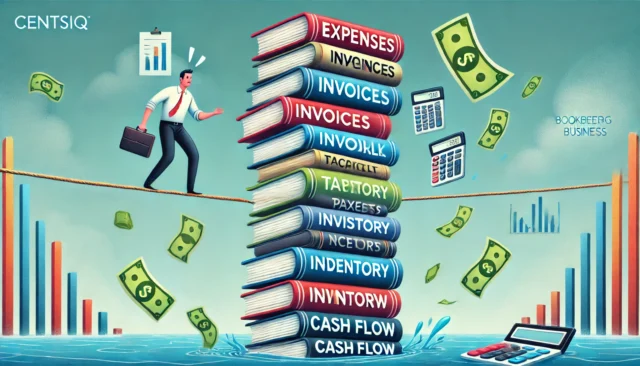As an Uber driver, managing your finances effectively is crucial for maximizing your profits and minimizing your tax burden. In this comprehensive guide, we’ll explore the best methods for Uber driver tax deductions in 2024 and provide valuable Uber driver bookkeeping tips to maximize profits. By learning how to track expenses for Uber drivers in 2024, you’ll be well-equipped to take control of your finances and boost your bottom line.

Table of Contents
Understanding the Importance of Proper Bookkeeping
Accurate bookkeeping is the foundation of financial success for any business, including rideshare driving. By maintaining detailed records of your income and expenses, you’ll be better positioned to make informed decisions about your business and take advantage of all available tax deductions.
Case Study: Sarah’s Bookkeeping Transformation
Sarah, an Uber driver in Chicago, struggled to keep track of her expenses during her first year of driving. As a result, she missed out on numerous tax deductions and found herself owing a significant amount in taxes. Determined to improve her financial situation, Sarah implemented a robust bookkeeping system in 2024. By learning how to track expenses for Uber drivers in 2024, Sarah was able to:
- Reduce her tax liability by $2,500
- Increase her net profit by 15%
- Make more informed decisions about when and where to drive
Sarah’s success story highlights the importance of implementing effective Uber driver bookkeeping tips to maximize profits.
Best Methods for Uber Driver Tax Deductions 2024
One of the most crucial aspects of bookkeeping for Uber drivers is identifying and tracking tax-deductible expenses. Here are some of the best methods for Uber driver tax deductions in 2024:
1. Mileage Tracking
Accurate mileage tracking is essential for maximizing your tax deductions. In 2024, the standard mileage rate for business use of a personal vehicle is $0.67 per mile. To take advantage of this deduction, you’ll need to keep detailed records of your business miles driven. Tip: Use a dedicated mileage tracking app to automatically log your trips and categorize them as business or personal.
2. Vehicle Expenses
If you opt for the actual expenses method instead of the standard mileage deduction, you can deduct various vehicle-related costs, including:
- Gas and oil changes
- Maintenance and repairs
- Insurance premiums
- Vehicle registration fees
- Depreciation
3. Smartphone and Data Plan
As an Uber driver, your smartphone is an essential tool for your business. You can deduct a portion of your phone and data plan costs based on the percentage used for business purposes.
4. Passenger Amenities
Any items you provide for your passengers’ comfort and convenience, such as water bottles, snacks, or phone chargers, are tax-deductible expenses.
5. Tolls and Parking Fees
Keep track of all tolls and parking fees incurred while driving for Uber, as these are fully deductible business expenses.
How to Track Expenses for Uber Drivers in 2024
Implementing an effective system for tracking expenses is crucial for maximizing your tax deductions and understanding your business’s financial health. Here are some Uber driver bookkeeping tips to maximize profits through expense tracking:
1. Use Accounting Software
Invest in user-friendly accounting software designed for small businesses and self-employed individuals. Popular options include QuickBooks Self-Employed and FreshBooks.
2. Separate Business and Personal Finances
Open a dedicated business bank account and credit card to keep your Uber-related transactions separate from your personal finances. This separation will make it much easier to track your business expenses accurately.
3. Digitize Receipts
Use a receipt scanning app to capture and organize your receipts digitally. This practice will help you maintain accurate records and make tax time much less stressful.
4. Regularly Reconcile Your Accounts
Set aside time each week to review and categorize your expenses. This habit will help you stay on top of your finances and identify any discrepancies or areas for improvement.
Case Study: Mike’s Expense Tracking Revolution
Mike, an Uber driver in Austin, Texas, struggled to keep up with his expense tracking during his first two years of driving. In 2024, he decided to implement a comprehensive expense tracking system using the best methods for Uber driver tax deductions in 2024. By diligently tracking his expenses, Mike was able to:
- Identify $3,200 in previously overlooked tax deductions
- Reduce his quarterly estimated tax payments by $800
- Gain a clear understanding of his most profitable driving times and locations
Mike’s success demonstrates the power of learning how to track expenses for Uber drivers in 2024 effectively.
Maximizing Profits Through Smart Financial Management
In addition to tracking expenses and maximizing tax deductions, there are several other Uber driver bookkeeping tips to maximize profits:
1. Monitor Your Earnings
Regularly review your earnings statements from Uber to ensure accuracy and identify trends in your income. This practice will help you make informed decisions about when and where to drive for maximum profitability.
2. Set Aside Money for Taxes
As an independent contractor, you’re responsible for paying your own taxes. Set aside a portion of your earnings (typically 25-30%) to cover your tax obligations and avoid surprises come tax time.
3. Plan for Vehicle Maintenance
Create a budget for routine vehicle maintenance and set aside funds for unexpected repairs. This proactive approach will help you avoid costly downtime and maintain a reliable vehicle for your Uber driving.
4. Analyze Your Profit Margins
Regularly calculate your profit margins by subtracting your expenses from your earnings. This analysis will help you identify areas where you can cut costs or increase efficiency to boost your overall profitability.
5. Invest in Your Business
Consider investing in tools and resources that can help you improve your Uber driving business, such as a more fuel-efficient vehicle, advanced navigation systems, or professional development courses.
Leveraging Technology for Efficient Bookkeeping
To streamline your bookkeeping processes and ensure accuracy, take advantage of technology designed specifically for rideshare drivers. Here are some tools that can help you implement the best methods for Uber driver tax deductions in 2024:
- Stride Tax: A free app that helps you track mileage and expenses specifically for rideshare drivers.
- Hurdlr: An all-in-one app for tracking income, expenses, and mileage, with real-time tax estimates.
- TripLog: A mileage tracking app with advanced features like automatic trip detection and fuel cost tracking.
By leveraging these tools, you can simplify the process of how to track expenses for Uber drivers in 2024 and focus more on growing your business.
Conclusion
Mastering the art of bookkeeping is essential for success as an Uber driver in 2024. By implementing the best methods for Uber driver tax deductions in 2024 and following our Uber driver bookkeeping tips to maximize profits, you’ll be well-positioned to increase your earnings and reduce your tax burden. Remember, learning how to track expenses for Uber drivers in 2024 is an ongoing process, so stay committed to refining your bookkeeping practices and adapting to changes in the industry.
Now that you understand the importance of proper bookkeeping for your Uber driving business, it’s time to take action.
CentsIQ offers expert bookkeeping and CFO services tailored specifically for small businesses like yours. Our solutions are designed to meet the unique needs of service providers, ensuring you have accurate financial records to fuel growth while freeing you to focus on what you do best – providing excellent service to your passengers.
Don’t let poor bookkeeping hold you back from maximizing your profits as an Uber driver. Contact CentsIQ today to learn how our expert services can help you take your rideshare business to the next level!







